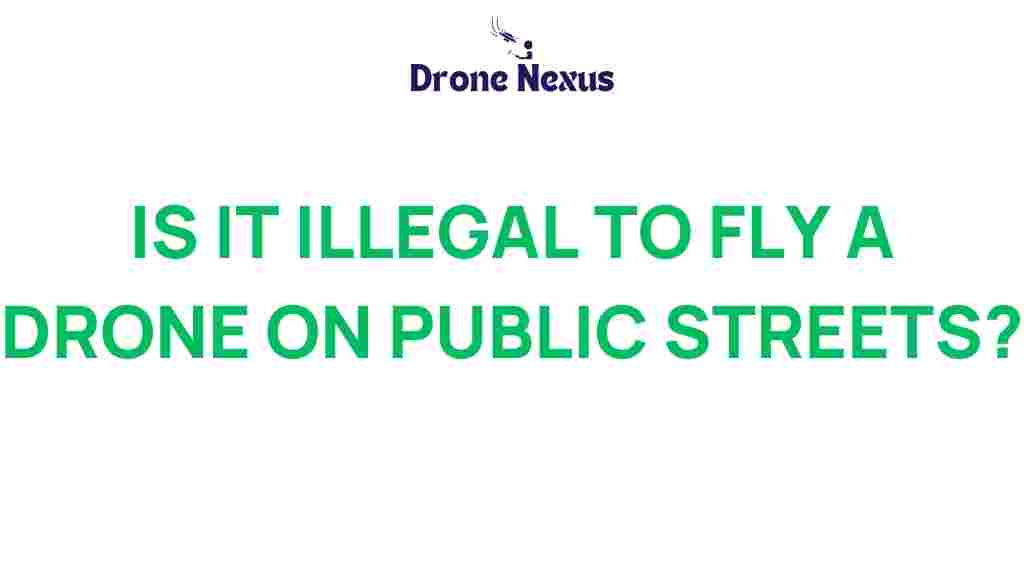Understanding Drone Regulations: Is It Illegal to Fly a Drone on Public Streets?
The use of drones has surged in popularity over recent years, leading to a myriad of questions about where and how these devices can be legally operated. Among the most pressing inquiries is whether it is illegal to fly a drone on public streets. The answer is not as straightforward as one might hope, as it heavily depends on local and federal drone regulations. In this article, we will navigate the gray areas of drone operation in public spaces, providing you with a comprehensive understanding of the laws that govern drone use and practical tips for compliance.
What Are Drone Regulations?
Drone regulations refer to the rules and guidelines set forth by government agencies to govern the operation of unmanned aerial vehicles (UAVs). In the United States, the Federal Aviation Administration (FAA) is the primary regulatory body overseeing drone usage. However, state and local governments may also impose additional restrictions. Understanding these regulations is crucial for drone operators to avoid legal penalties.
The Legal Framework Surrounding Drone Use
To better understand whether it is illegal to fly a drone on public streets, it’s essential to consider the legal framework surrounding drone usage:
- Federal Regulations: The FAA has established rules for commercial and recreational drone operators. Key regulations include:
- Registration: Drones weighing over 0.55 pounds must be registered with the FAA.
- Altitude Limits: Drones may not fly higher than 400 feet above ground level.
- Line of Sight: Operators must keep their drones within visual line of sight.
- Airspace Restrictions: Drones are prohibited from flying in restricted airspace, such as near airports.
- State and Local Laws: Many states and municipalities have enacted their own drone regulations. These can include:
- Prohibitions on flying in certain public areas, such as parks and schools.
- Requirements for obtaining permits for drone use in specific locations.
- Restrictions on capturing images or videos of individuals without consent.
Flying Drones on Public Streets: What You Need to Know
Now that we’ve established the regulatory landscape, let’s delve into whether you can fly a drone on public streets. The answer generally hinges on compliance with both federal and local drone regulations.
Step-by-Step Process to Legally Fly a Drone on Public Streets
To ensure that you are flying your drone legally on public streets, follow this step-by-step process:
- Check Federal Regulations: Start by familiarizing yourself with the FAA’s rules regarding drone operation.
- Research Local Laws: Look up your state and local laws concerning drone use. This can usually be done through your local government’s website or by contacting your city hall.
- Obtain Necessary Permits: If required by local laws, obtain the necessary permits for flying your drone in public spaces.
- Choose the Right Location: Select a public street that is not restricted or heavily populated. Avoid flying over people or private property without permission.
- Fly Responsibly: Always maintain a visual line of sight with your drone, avoid flying near airports, and respect privacy laws by not recording individuals without their consent.
Potential Consequences of Non-Compliance
Failing to adhere to drone regulations can lead to serious consequences, such as:
- Fines: The FAA can impose hefty fines for non-compliance with federal regulations.
- Confiscation of Equipment: Law enforcement may confiscate your drone if it is being operated illegally.
- Legal Action: Violating state or local laws can result in criminal charges or civil lawsuits.
Common Troubleshooting Tips
Even with the best intentions, drone operators may encounter issues while attempting to fly legally on public streets. Here are some troubleshooting tips:
- Check Weather Conditions: Always assess weather conditions before flying. High winds or rain can affect drone stability.
- Battery Life: Ensure that your drone is fully charged before flight to avoid unexpected landings.
- Software Updates: Regularly update your drone’s software to ensure optimal performance and compliance with regulations.
- Monitoring Airspace: Use apps or resources that provide real-time information about airspace restrictions and no-fly zones.
Understanding Special Cases
There are some special circumstances regarding drone use that can complicate matters:
- Commercial Use: If you intend to use your drone for commercial purposes, you must obtain a Part 107 certification from the FAA.
- Emergency Situations: In some cases, such as emergencies or public safety operations, local authorities may have different regulations.
- Events and Gatherings: Large public events may have specific restrictions in place for drone operation, so always check with event organizers.
Best Practices for Responsible Drone Operation
To ensure a safe and legal flying experience, consider adopting these best practices:
- Educate Yourself: Stay informed about changes in drone regulations and best practices.
- Communicate with Others: Always inform people nearby that you will be flying a drone to avoid misunderstandings.
- Insurance: Consider obtaining liability insurance to protect yourself in case of accidents.
- Join a Community: Engage with local drone clubs or online forums to share experiences and learn from others.
Conclusion
In summary, while it is not inherently illegal to fly a drone on public streets, it is crucial to navigate the complex web of drone regulations that govern such activities. By understanding federal, state, and local laws, obtaining necessary permits, and adhering to best practices, you can enjoy the thrill of flying your drone without running afoul of the law.
For more information about local regulations, visit your city’s official website or refer to resources like the FAA drone resource page. Additionally, consider joining local drone communities for support and guidance.
With informed and responsible flying, you can make the most of your drone experience while ensuring compliance with the law. Happy flying!
This article is in the category Safety and created by DroneNexus Team
